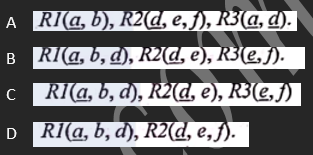A Level Computer Science Quiz 2020 Part 3
20 QuestionsQuiz Description
The study of computers and their architecture that deals with directory of computation or the design of computers. The world is what it is today in terms of technological advancement due to the knowledge acquired from computers and its application.
In paper one of the Advance level GCE examinations, students always face a lot of difficulties because of the similarity among answers and always have a myth that it is almost impossible to have a good grade from this section of the examination. To help students change this mindset and prepare them for any computer science examination.
The quiz is made of 20 questions only. Questions are based on the topics “Data communications and networking, data algorithms and structure etc.
To have more resourceful materials such as this quiz, you can visit our website.
Good luck!!!
When an entity has the primary key of another entity as an attribute, this creates:
Which of the following is not the required condition for binary search algorithm?
In the database relation R (a, b, d, e, f) attribute b and d are dependent only on a; e only on d; and f only on d. which of these sets of relations is equivalent to R in third normal form (3NF), if key attributes are underlined?

How many distinct memory addresses can a processor access if its machine word has 8 bytes?
The design strategy that identifies subtasks based on the operations carried out in them to provide a service or feature is known as:
The post order transversal of a binary tree is DEBFCA. Find out the preorder transversal.
It is used how values change in memory locations, without program instructions, or altering memory locations; during debugging
Some programs will always guarantee an answer if there is one, but may run for ever if there is none. Such problems are:
Algorithms or problems they solve are sometimes described as hard or intractable. This is often a measure of:
The space factor when determining the efficiency of algorithm is measured by counting the:
To solve a certain problem, some of its procedures are executed on distinct machines, possibly across the world. We designed a(an):
Programming language (PL) functions are designed to return a value; the values returned by PL functions are often passed in other function or procedures:
We examine a program, executing and checking its instructions, so as to establish that it behaves as expected. We are doing:


